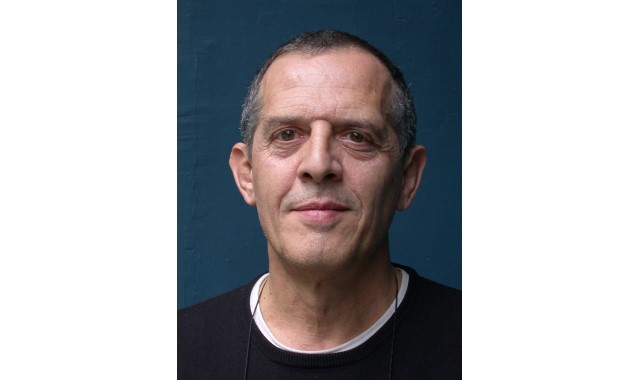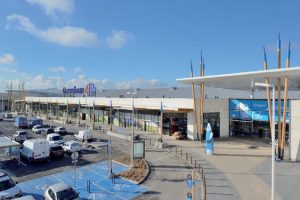
En 1989, Laurent Fachard fonde son agence de conception lumière avec l’ambition d’apporter à la nuit des cités une vraie dimension qualitative et sensible.
Laurent Fachard – BUILDING THE LIGHT
In 1989, Laurent Fachard founded his lighting design agency with the ambition of bringing a real qualitative and sensitive dimension to the night of the city. (article in English after the French version)
Lumières : Comment s’est effectué votre passage de la scène du théâtre à celle de la cité ?
Laurent Fachard : L’approche de l’éclairage public, à la fin des années 1980, reposait surtout sur les aspects quantitatif et fonctionnel et très peu sur la qualité de la lumière. Or, sans lumière de qualité, il ne peut y avoir de bonnes ambiances lumineuses ni d’émotions dans ces environnements. J’ai toujours pensé qu’un éclairagiste, même issu du spectacle, pouvait exercer son savoir-faire dans les rues, les hôtels, les hôpitaux, les prisons, etc., car on a besoin d’éclairage artificiel dans tous les secteurs des activités humaines. En 1989, je me suis donc transformé, avec audace et un peu d’inconscience, en petit entrepreneur, artisan de la lumière, tout en restant éclairagiste. Nous n’étions que six ou sept concepteurs lumière indépendants en France à l’époque, et nous répondions à une nouvelle approche de l’aménagement urbain.
N’est-ce pas plutôt vous, éclairagistes, qui avez créé cette approche ?
Non, en fait, le mouvement est parti des architectes, des urbanistes et des paysagistes. C’est à l’initiative de certains maîtres d’œuvre sensibles et curieux qu’est née la question de la nuit et de l’éclairage des espaces publics, car les techniciens des villes ne s’intéressaient qu’à l’installation électrique tandis que les élus n’avaient qu’une vision diurne de la ville. Nous, éclairagistes, sommes arrivés comme une interface entre le metteur en scène urbain et le technicien : un chef opérateur lumière qui traduit l’intention dramaturgique, restitue la scénographie, le décor ou l’aménagement, au service des besoins visuels des usagers. Nous avons toujours éclairé « au service » des usagers, en jouant sur les températures de couleur, les intensités, les rapports de contrastes et les temporalités. La lumière se construit, ce n’est pas une soupe qu’on répand uniformément et intemporellement dans l’espace urbain !
Comment les municipalités se sont-elles inscrites dans ce mouvement ?
Parallèlement, la prise de conscience par les politiques de la nécessité d’améliorer les conditions de vie des usagers dans l’espace public s’est traduite par une « volonté politique » d’ouvrir le champ des compétences aux paysagistes, aux artistes et aux éclairagistes pour aménager la ville : notre compétence éclairagiste fut ainsi demandée dans les appels d’offres. À Lyon, le maire adjoint de l’urbanisme Henri Chabert a été l’un des premiers à lancer un Plan lumière dans le cadre du Plan de rénovation urbaine : ainsi, la place des Terreaux fut rénovée en 1994 par l’architecte-urbaniste Christian Drevet accompagné de l’artiste Daniel Buren, auxquels je me suis joint pour l’éclairage. Puis, ont suivi d’autres projets à Lyon comme le Jardin chromatique du parc Gerland avec le paysagiste Michel Corajoud, le quartier de la Duchère à l’ouest de Lyon sur lequel je travaille depuis plus de 20 ans avec Alain Marguerit. La lumière urbaine doit permettre aux usagers de s’orienter, de se déplacer en toute sécurité, mais surtout de se sentir bien dans l’espace urbain éclairé.
Vous avez beaucoup travaillé sur des projets d’urbanisme…
Nous avons convaincu les élus de différencier la façon de construire l’éclairage des espaces publics : il y a 40 ans, on retrouvait le même type de luminaire dans la ruelle étroite d’un village du Moyen Âge, sur le boulevard ou sur la grande avenue d’une ville. Nous avons expliqué et montré comment la lumière devait être en adéquation avec l’architecture de ces espaces ; ce qui a conduit à penser la ville par la lumière, puis à l’urbanisme nocturne. La lumière se construit par des effets et des états lumineux créant un environnement lumineux qui répond à des besoins fonctionnels et psychobiologiques d’informations visuelles liés aux activités des usagers.
Aujourd’hui, la façon de construire la lumière a-t-elle changé ?
Nous travaillons avec des technologies plus efficaces, des matériels légers et de petites dimensions, mais le processus de construction de la lumière reste le même. Le métier, le savoir-faire de l’éclairagiste sont aujourd’hui reconnus. L’usager est au centre de la conception lumière. Sur les traces d’Adolphe Appia, metteur en scène de la fin du xixe et début du xxe siècle qui a révolutionné la scénographie théâtrale grâce à ses conceptions de l’espace, l’éclairagiste propose une réflexion sur les modalités d’utilisation des moyens mis à la disposition du scénographe urbain. La ville n’est pas un théâtre mais trois facteurs se trouvent au cœur de la mise en scène de l’espace urbain : l’usager (l’acteur, porteur du drame), l’aménagement de l’espace public (la disposition de la scène) et la lumière « au service de »… l’acteur et l’espace, vivifiant l’un et l’autre.
Laurent Fachard est ingénieur éclairagiste, Atelier Les Éclairagistes Associés. À la fin des années quatre-vingt, Laurent Fachard quitte le monde du spectacle et de l’intermittence (au théâtre, au cinéma et à la télévision) en tant qu’éclairagiste, chef opérateur lumière, curieux de se confronter au quotidien à l’éclairage public dans les villes, dont l’approche était à l’époque exclusivement fonctionnaliste et technicienne. www.leseclairagistesassocies.com

•••
BUILDING THE LIGHT
Lumières: How was your transition from the theatre stage to the city stage?
Laurent Fachard: The approach to public lighting at the end of the 1980s was based mainly on quantitative and functional aspects and very little on the quality of light. However, without a good quality of light, there can be no good lighting ambience or emotion in these environments. I have always thought that a lighting designer, even one who comes from the theatre, could provide his expertise in streets, hotels, hospitals, prisons, etc., because artificial lighting is needed in all sectors of human activity. So, in 1989, with audacity and a little bit of unawareness, I became a small entrepreneur, a light maker, while remaining a lighting designer. There were only six or seven independent lighting designers in France at the time, and we were responding to a new approach to urban planning.
Didn’t you lighting designers create this approach?
No, the movement started with architects, urban planners and landscape designers. It was on the initiative of certain sensitive and curious project managers that the question of night and the lighting of public spaces arose, because city technicians were only interested in the electrical installation while elected officials only had a daytime vision of the city. We, lighting designers, arrived as an interface between the urban director and the technician: a lighting director who expresses the dramaturgical intention, restores the scenography, the decor or the layout, serving the visual needs of the users. We have always created light ‘in the service’ of the users, playing on colour temperatures, intensities, contrast ratios and temporalities. One builds light, it is not a soup that is spread uniformly and timelessly in the urban space!
How did municipalities join this movement?
At the same time, political awareness of the need to improve the living conditions of users in the public space led to a ‘political will’ to open up the field of skills to landscape designers, artists and lighting designers to develop the city; our lighting expertise was thus requested in calls for tenders. In Lyon, the deputy mayor of urban planning, Henri Chabert, was one of the first to launch a Lighting Plan as part of the Urban Renewal Plan. Thus, the Place des Terreaux was renovated in 1994 by the architect-urban planner Christian Drevet accompanied by the artist Daniel Buren, whom I joined for the lighting. This was followed by other projects in Lyon, such as the Chromatic Garden in Gerland Park with landscape architect Michel Corajoud, the Duchère district in the west of Lyon on which I have been working for over 20 years with Alain Marguerit. Urban light should allow users to find their way, to move around safely, and, above all, to feel good in the illuminated urban space.
You’ve worked on many urban projects…
We have convinced elected officials to differentiate the ways of building light for public spaces. Forty years ago, the same type of luminaire was found in the narrow alley of a medieval village, on the boulevard or on the main avenue of a city. We explained and showed how light had to be in line with the architecture of these spaces, which led to imagining the city through light, and then to creating night-time urban planning. Light is built through luminous effects and states creating a luminous environment that meets the functional and psychobiological needs for visual information related to users’ activities.
Today, has the method of building light changed?
We work with more efficient technologies, lighter and smaller materials, but the process of building light remains the same. The profession and the know-how of the lighting designer are now recognised. The user is at the centre of lighting design. Following in the footsteps of Adolphe Appia, a director of the late 19th and early 20th centuries who revolutionised theatrical scenography, and thanks to his conception of space, the lighting designer offers a reflection on the ways in which the means made available to the urban scenographer can be used. The city is not a theatre, but three factors are at the heart of the staging of urban space: the user (the actor, the bearer of the drama); the layout of public space (the layout of the stage); and light ‘in the service of” the actor and the space, invigorating both.




